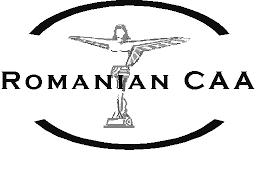Certification of aerodromes according to Reg. (EU) 139/2014
In the context of a non-uniform implementation of civil aviation safety requirements at Community airports, the European Aviation Safety Agency (EASA) has strengthened ICAO safety principles using specific tools, which have been developed under common rules for civil aviation (including aerodromes).
Regulation (EC) No 216/2008 of the European Parliament and of the Council of 20 February 2008 on common rules in the field of civil aviation and establishing a European Aviation Safety Agency, and repealing Council Directive 91/670/EEC, Regulation (EC) No 1592/2002 and Directive 2004/36/EC, as amended and supplemented, lays down the Basic Rules (BR). The Essential Requirements (ER) required to be complied with at the airport in order to maintain an acceptable level of aviation safety are set out in Art. 8a and Annex Va.
Part of the implementation rules related to the provisions of Reg. (EC) 216/2008 were subsequently developed in Commission Regulation (EU) No 139/2014 of 12 February 2014 laying down requirements and administrative procedures related to aerodromes pursuant to Regulation (EC) No 216/2008 of the European Parliament and of the Council.
Subsequently, EASA adopted by Decision of the Executive Director the acceptable means of compliance with Regulation (EU) 139/2014 (Decision No 2014/012 / R of the EASA Executive Director adopting AMC / GM to Regulation (EU) No 139/2014, as subsequently amended and supplemented), as well as the technical requirements for the design aerodromes (Decision no. 2014/013 / R of the EASA Executive Director adopting the CS / GM for the design of aerodromes (CS-ADR-DSN), as subsequently amended and supplemented).
For the implementation of Reg. (EU) 139/2014, AACR has developed a set of Civil Aviation Procedures and Instructions (PIAC).
The purpose and organization of the supervision process according to Reg. (EU) 139/2014
AACR shall exercise the powers of the nationally designated competent authority within the meaning of the requirements of Regulation (EU) No 182/2011. 139/2014, thus ensuring the supervision of aerodromes for which it issued European certificates.
In order to carry out systemic surveillance and adapt it to the particularities of each aerodrome (physical characteristics, infrastructure, operations, traffic, etc.), AACR audits and inspections in the field are constituted in surveillance planning cycles (priorities, frequency, content, etc.) and subsequent annual surveillance programs.
AACR organizes the monitoring process (priorities, frequency, nature, themes, etc.) according to:
1. the risks specific to each aerodrome, associated with:
- compliance by the aerodrome operator with the certification basis and applicable requirements;
- potentially hazardous events for flight safety;
- important changes (infrastructure, operational);
- particular characteristics of the aerodrome (infrastructure, operations, traffic, etc.);
2. the risk management by the aerodrome operator, revealed by:
- the nature of the differences from the specific requirements applicable;
- the level of maturity of the safety management system;
- compliance with change monitoring;
- risk control (identification, assessment and reduction).
The cycle and subsequent surveillance programs, as well as their annual revisions, shall be determined on the basis of the following elements (see AMC1 ADR.AR.C.010 (b) and (c)):
- the results of the previous certification and surveillance activities;
- the aerodrome operator / platform management service provider to effectively identify aviation safety hazards and manage the associated risks, effective
- control over all applicable changes, in accordance with the requirements of ADR.OR.B.040;
- absence of level 1 findings;
- response time to implement corrective measures required by AACR, in accordance with ADR.AR.C.055 (d) (2);
- and the exposure of the aerodrome to risks arising from the volume of traffic, the types of aircraft or the physical characteristics of the aerodrome.
